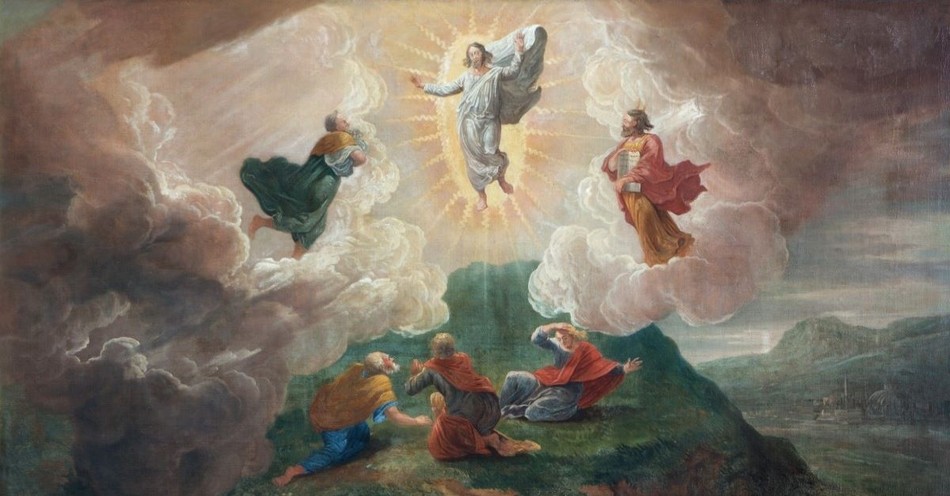We know the names of the first four books of the New Testament (also called the gospels). But what do we know about the authors of these books?
What Do We Know about Matthew?
Matthew is first introduced as a man sitting in a tax collector’s booth (Matthew 9:9) and is called to follow Jesus. So, he “got up and followed him.” In each of the gospels, Matthew is listed as one of the twelve disciples of Jesus (Matthew 10:3, Mark 3:18, Luke 6:15, and Acts 1:13).
In Mark and Luke, Matthew is also referred to as Levi, the son of Alphaeus, the Tax Collector (Mark 2:14, Luke 5:27). The fact he had two names (the Greek name Matthew and the Hebrew name Levi) shows that he had a place of status within the Roman community.
Another thing we know about Matthew is that he was with the other 10 disciples at the ascension of Jesus, providing the eyewitness account in Matthew 28:16-20.
What Do We Know about Mark?
Mark (or John Mark) makes his first appearance in Acts 12:12 after Peter escapes from prison and goes to “the house of Mary, mother of John, also called Mark.” Some Bible footnotes suggest he was the young man who fled in Mark 14:51-52. Clues in the Mark 14 passage (the fact the young man was wearing a linen garment) suggest that this young man came from a wealthy family.
Colossians 4:10 tells us that John Mark was the cousin of Barnabas.
John Mark was also someone who traveled with Saul and Barnabas on their first missionary journey (Acts 13:5). Other comments of Paul in Philemon 24 and 2 Timothy 4:11 show how Paul appreciated Mark and found him “helpful in ministry” (2 Timothy 4:11).
From Colossians 4:10 and Philemon 24, we know Mark was with Paul during his imprisonment in Rome.
Even though Mark was not considered an immediate disciple of Jesus, he was found in the presence of the apostles and disciples throughout the early church.
Mark makes another appearance in 1 Peter 5:13, mentioned as being with Peter in Babylon at the time of the letter’s writing. Peter’s reference to John Mark as “his son” suggests that Peter played a key role in leading Mark to salvation in Christ. This close relationship between Peter and Mark leads many scholars to agree that Mark’s gospel is an interpretation of Peter’s eyewitness account of Jesus’ ministry. Several first-century writers, Justin the Martyr (AD 150-160), Clement of Alexandria (AD 195), and Tertullian (AD 200), state that Mark received his information from Peter and wrote the gospel after the death of Peter and Paul.
What Do We Know about Luke?
First, we know he was a highly educated man. In Colossians 4:1, Paul refers to Luke as ‘the doctor.’ While the passage doesn’t provide further details, much of the language and writing styles are consistent with a first-century physician (Acts 28:6). Second, the many Greek expressions throughout both Luke and Acts would also suggest that he was not of Hebrew origin. He was a Greek gentile writing to other Greeks, hence why many Jewish traditions mentioned in the Gospel of Luke are so detailed.
Senior editor Liz Kanoy said this about Luke:
“Luke was an evangelist, a historian, a physician, a pastor, a missionary, a companion, a brother, and a theologian. His goal and purpose in writing a gospel were to write exact truth concerning Jesus Christ and the plan of salvation, an infallible history, and theology inspired by the Spirit. And with God’s guidance, that’s exactly what he did.”
What Do We Know about John?
We know that John was the son of Zebedee and the brother of James (who was among the first disciples called to follow Jesus). Some scholars believe that John was the first cousin of Jesus. His mother possibly was Salome, an assumed sister of Mary (Matthew 27:56). Before John was called to be a disciple, he was a fisherman in Galilee. In the Gospel of Mark, John is always mentioned after his brother James, suggesting that John was the younger of the brothers.
John was in Jesus’ inner circle and present at the Transfiguration (Matthew 17:1, Mark 9:2, Luke 9:28).
We know that John was with Mary at the crucifixion of Jesus (John 19:26) and was entrusted with the care of Jesus’ mother, Mary.
After the accession of Jesus and Pentecost, Peter and John accomplished many crucial actions establishing the early church. John was one of the early pillars of the Christian community, helping to establish beliefs and doctrines, which can be seen in the books of 1-3 John.
John is also identified as the author of Revelations (Revelation 1:1,4,9; 22:8).
According to church histories, John was also the only disciple to die of natural causes.
Why Is John’s Writing Different from Matthew, Mark, and Luke?
The Gospel of John is unique among the gospels. Of the four gospels, it does not include many of the miracles and events that are mentioned in the other three gospels. Pastor Doug Bookman says that “92% of what John records is unique to John.” But why?
Bookman’s full answer appears at the end of this article, but basically, there are three trains of thought here.
- The gospel of John was written much later, around AD 85, while the other gospels are said to have been written between AD 50 and AD 60. The question asked of Peter in John 21 indicates the author was aged and looking back on his life.
- The Gospel of John wasn’t written to a specific audience but to everyone. Matthew was written for the Jesus audience focused on Jesus being the Messiah. Mark spoke to the Roman believers with a focus on Jesus as the servant of God. Luke was written to the Greeks to communicate Christ as the Son of Man and help Greeks understand Hebrew culture. The Gospel of John speaks to the general public, the believer and the non-believer, in plain language so that all can understand the gift of salvation through Christ.
- Finally, Bookman states “that since the Synoptic Gospels were already in circulation” in the early Church, John was the last living eyewitness to the events of Jesus’s ministry, death, and resurrection. John’s goal was to combat the disbelief present in the church due to rising Roman persecution. The whole goal of the Gospel of John is to build a case that Jesus is everything he said he was, the visible image of the invisible God (Colossians 1:15).
Did John Write Revelation and the Gospel of John?
While the Gospel of John does not indicate the author’s identity, Revelation identifies John as its author (Revelation 1:1). There are many similarities between the books’ writing styles, helping make the case that they have the same author. Second-century writer Justin the Martyr was the first to say John wrote Revelations.
In the third century, a bishop named Dionysius suggested that the author of Revelations was John the Presbyter, whose name appears in many early extra-biblical writings. While some hold to Dionysius’ view, much of the external evidence supports the traditional view of the disciple John writing both John and Revelations.
While there are a lot of different thoughts on the who of the four gospels of Matthew, Mark, Luke, and John, the core message remains the same. Consider Jesus, his life, heritage, miracles, teachings, death, and resurrection; only he can change everything.
If you have never read any of the gospels, start with the gospel of John. Its simple language, and its focus on who Jesus was, make it the best place to begin.
What Makes John's Gospel So Different: Full Answer
Here is Doug Bookman’s full take on why John writes such a different account of Jesus than the other three writers.
(Transcript of the video above, edited for readability)
“Matthew, Mark, and Luke are often referred to as the synoptics. It means they see (optic, together) syn or soon, so they tend to look at the same thing, whereas John’s is remarkably, John's gospel is remarkably distinct. It's been computed that about 92% of what John records is peculiar to John. That is, it’s not mentioned in the Synoptics in Matthew, Mark, and Luke. As a matter of fact, even when John is telling the same story, when he’s telling about the upper room that all three Synoptics spend a lot of time with, John gives us entirely different emphasis and material. So he is remarkably different.
There’s a lot of discussion as to why. I believe it’s quite simple.
I would suggest that number one, clearly—and this is a matter of very solid historical record—there's really no reason to question that John is writing much later. I think Matthew was probably written in the early fifties, Luke written in the late fifties or early sixties, and Mark written in the mid-sixties. But John is probably writing somewhere around 80 or 85. So a generation has passed. John is the last living eyewitness, and this is huge. The Synoptics are in circulation. John knows that you have the Synoptics.
I think the [second] point is simply this: there is a crisis and it’s a huge crisis of disbelief, and many in the Mediterranean world are tempted to go back. Many Jewish Christians are abandoning the faith they had once embraced because of this huge crisis. And John as the last living eyewitness wants to write a book, which most importantly reveals the true character of unbelief. What you have in John are these remarkably well-selected, thoroughly-told stories of miracle events where men wickedly and hideously disbelieve.
What John is trying to do is to unmask the true character of unbelief, but he's also trying to build the case that Jesus is everything he claimed to be, and he knows you’ve got the Synoptics. So he's not going to tell you those same stories, those are in broad circulation.
Furthermore, John knows that he’s writing late and therefore he wants to give the impression of an eyewitness. And so he tells the story in greater detail because he wants you to be able to crosscheck these details and so on.
So John, I think is number one, he’s addressing a very important, horrible crisis of disbelief. He’s building a case for Jesus that unmasked the true character of disbelief. But because he is writing later and he knows that the Synoptics are in wide circulation, he’s being careful not to simply tell you those same stories—though he knows those stories, and he embraces those stories, and he fully acknowledges the truth of the Synoptics. But his purpose is to give another voice that draws on stories and accounts that are not widely familiar. But as an eyewitness, he can tell those stories and they have the net effect of building a profoundly convincing case both for Jesus’ deity and for his capacity to be the savior that he claimed to be.”
(First published as “Why is John's Gospel So Different?” on Christianity.com on September 2, 2010)
Further Reading:
Photo Credit: Getty Images/sedmak

You can find out more about Valerie, her books, and her blog at www.valeriefentress.com.
This article is part of our People of Christianity catalog that features the stories, meaning, and significance of well-known people from the Bible and history. Here are some of the most popular articles for knowing important figures in Christianity:
How Did the Apostle Paul Die?
Who are the Nicolaitans in Revelation?
Who Was Deborah in the Bible?
Who Was Moses in the Bible?
King Solomon's Story in the Bible
Who Was Lot's Wife in the Bible?
Who Was Jezebel in the Bible?
Who Was the Prodigal Son?









